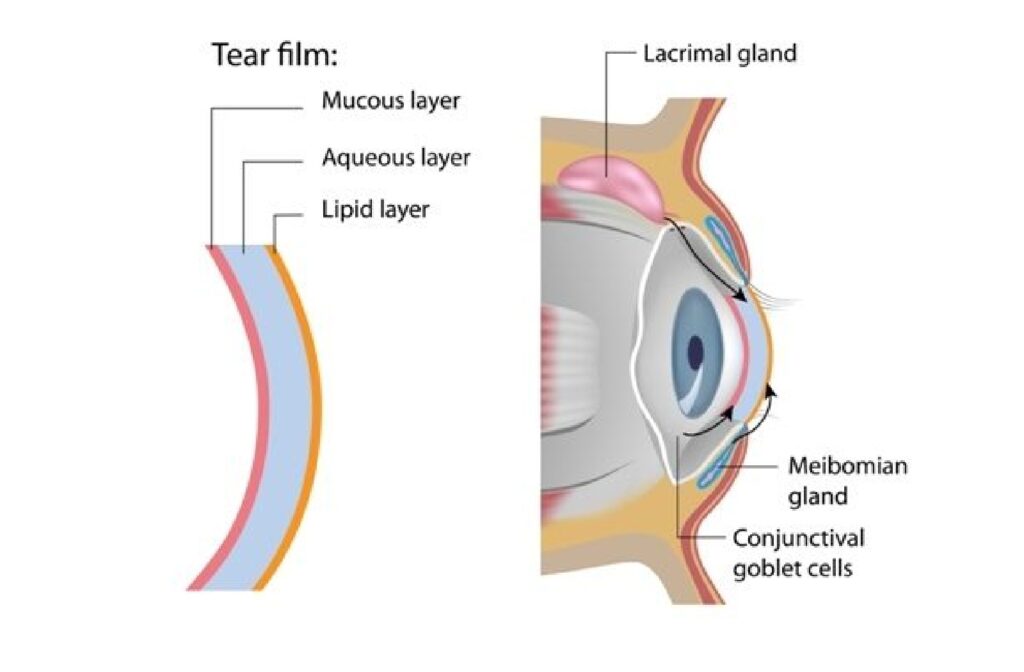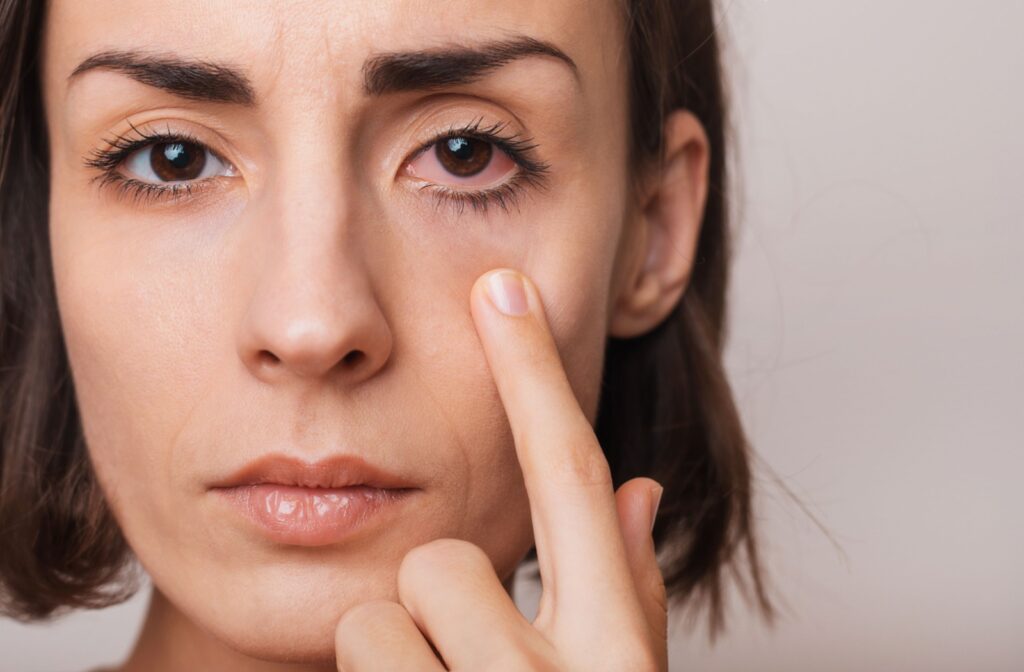Dry eye flare-ups can significantly impact individuals, causing discomfort and affecting daily activities. A dry eye flare-up is a period of intense dry eye symptoms that are more severe than usual and can be triggered by various factors.
By delving into the specifics of dry eye flare-ups with Signature Eye Care, you can address your symptoms, seek appropriate treatment, and adopt preventive measures to alleviate discomfort and promote healthier eyes.
Understanding Dry Eye Flare-Ups
Dry eye flare-ups are characterized by increased discomfort and irritation compared to the baseline symptoms of chronic dry eye syndrome. While chronic dry eye is an ongoing condition marked by insufficient tear production or poor tear quality, flare-ups intensify these symptoms periodically.
Differences Between Dry Eye Flare-Ups & Chronic Dry Eye Syndrome:
- Duration: Flare-ups are temporary episodes of heightened symptoms, whereas chronic dry eye persists over time.
- Intensity: Flare-ups typically exhibit more severe symptoms than the baseline discomfort experienced in chronic dry eye.
- Triggered Nature: Flare-ups can be triggered by various factors, unlike chronic dry eye, which presents consistent symptoms.
Common Symptoms Experienced During a Flare-Up
- Stinging or Burning Sensation: You may feel a persistent stinging or burning sensation in your eyes, indicating increased dryness and irritation.
- Redness: During a flare-up, your eyes may appear red and inflamed due to a lack of sufficient moisture and ongoing discomfort.
- Blurred Vision: Vision may become blurry or unclear, affecting tasks requiring visual focus and acuity.
- Sensitivity to Light: Increased sensitivity to light, known as photophobia, is a common symptom of dry eye flare-ups, causing discomfort in bright environments.
- Excessive Tearing: Paradoxically, dry eye flare-ups can trigger excessive tearing as the eyes attempt to compensate for the lack of adequate lubrication, leading to watery eyes.
Impact on Daily Activities & Quality of Life:
- Disruption of Tasks: The symptoms of a dry eye flare-up can interfere with daily activities such as reading, driving, or working on digital screens, impacting productivity and comfort.
- Decreased Comfort: Persistent stinging, burning, or sensitivity to light can reduce overall comfort levels and make activities like outdoor exposure or screen time challenging.
- Emotional Well-being: Chronic discomfort from dry eye flare-ups can affect emotional well-being, leading to frustration, anxiety, or reduced quality of life.
- Visual Impairment: Blurred vision and fluctuating clarity during flare-ups can hinder visual tasks, pose safety concerns, and reduce overall visual acuity.
Who Is Prone to Dry Eye Flare-Ups?
- Older Adults: Aging is a significant risk factor for dry eye flare-ups, as tear production decreases and ocular surface changes occur with age, leading to increased dryness and discomfort.
- Contact Lens Wearers: Contact lens wearers can be prone to dry eye flare-ups due to reduced tear film stability, increased tear evaporation, and potential mechanical irritation from the lenses.
- Individuals with Autoimmune Disorders: Conditions such as Sjögren’s syndrome, rheumatoid arthritis, and lupus can predispose you to dry eye flare-ups, as autoimmune-related inflammation affects tear production and quality.
- Those Exposed to Dry or Windy Environments: Environmental factors like dry air, wind, dust, and pollutants can exacerbate dry eye symptoms and trigger flare-ups if you’re exposed to such conditions regularly.
Beyond these key factors, there are additional risk factors that can contribute to dry eye flare-ups. Whether for work or leisure, screen time can lead to reduced blink rates, increased eye strain, and digital eye fatigue. Certain medications can have a similar effect, particularly antihistamines, decongestants, and antidepressants. Lastly, women—particularly during menopause or pregnancy—could experience hormonal fluctuations that can contribute to dry eye flare-ups.

Managing a Dry Eye Flare-Up
By implementing practical strategies, you can manage flare-ups more effectively and improve your overall eye health.
How to Handle a Dry Eye Flare-Up:
- Hydration: Make sure you receive adequate water intake throughout the day to maintain overall hydration levels, including eye moisture.
- Artificial Tears: By using lubricating eye drops or artificial tears it can alleviate dryness, soothe irritation, and enhance tear film stability.
- Humidifiers: Use humidifiers in indoor spaces, especially during dry seasons or in environments with low humidity, to increase air moisture levels and prevent excessive evaporation of tears.
- Warm Compresses: Try applying warm compresses to the eyes to relieve eyelid inflammation, stimulate natural oil gland secretions, and improve tear quality.
- Avoiding Triggers: Identify and avoid triggers that worsen dry eye symptoms, such as exposure to dry air, prolonged screen time, smoke, or allergens.
Reduce Dry Eye Flare-Ups
Introducing some additional basic prevention measures can assist you in lowering the severity and frequency of flare-ups. We recommend introducing simple blinking exercises, such as consciously blinking more frequently or performing eye rolls, to promote natural lubrication of the eyes and prevent dryness. Use protective eyewear, such as goggles or sunglasses, in harsh environments with high wind, dust, or UV exposure to shield your eyes. Incorporate a balanced diet rich in omega-3 fatty acids, found in foods like fish, flaxseeds, and walnuts, to support tear production and maintain eye lubrication.
Take Control of Your Eye Health
By recognizing the triggers, symptoms, and management strategies associated with flare-ups, you can effectively navigate and minimize discomfort. Implementing proactive measures, such as hydration, artificial tears, and lifestyle adjustments, can help manage flare-ups and promote better eye health in the long run. To receive personalized guidance on managing dry eye flare-ups and optimizing your eye health, contact Signature Eye Care for tailored treatment options. Take the first step towards healthier eyes by booking an appointment today for comprehensive eye care services and specialized assistance in managing dry eye flare-ups. Your eyes deserve it.



